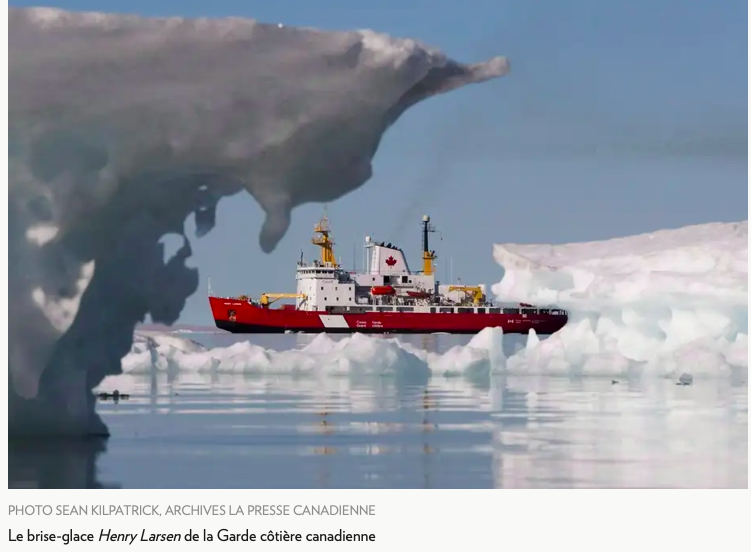
(Québec) Davie hopes that a tripartite agreement announced on Thursday on the sidelines of the NATO summit in Washington will have a major impact on its Lévis shipyard and the one it recently acquired in Finland.
Canada, the United States and Finland have announced the creation of the ICE Pact. The agreement signals the willingness of these countries to revive the construction of icebreakers in a particularly tense Arctic context.
« The idea, as I understand it, is that Canada’s allies are planning to acquire several dozen icebreakers, and we want to create expertise in these three countries to make it available to our allies who would like to buy these ships, » explains Justin Massie, professor of political science at UQAM.
In a press release, the White House points out that shipbuilding is a capital-intensive business, and that « long-term orders for multiple ships are critical to a shipyard’s success ».
The message to allies is clear: Canada, the United States and Finland – attending its first NATO summit as a member in good standing – have shipyards and are ready to deliver icebreakers, a vessel requiring rare expertise.
Davie believes it is well placed to take advantage of the agreement. « We have two key assets, we have the yard that has built the most icebreakers in the world, the Helsinki yard, and we have the yard with the largest icebreaker order book in the world, the Davie yard, » notes Marcel Poulin, spokesman for Davie Shipyard.
Last November, Davie acquired the Finnish shipyard Helsinki Shipyard Oy, with the support of the Quebec government. It has also replenished its order book at its Lévis yard since its reintegration into the National Shipbuilding Strategy (SNCN) in spring 2023.
« The geopolitical context means we need icebreakers. China took delivery of a fourth icebreaker this week. Russia currently has some fifty icebreakers in operation, » notes Marcel Poulin. The United States, Canada and Finland all agree that NATO really needs to concentrate on acquiring new icebreakers.
Allies in search of icebreakers
According to Jean-Yves Duclos, Canada’s Minister of Public Services and Procurement, « it’s almost certain » that the Lévis shipyard will benefit from this agreement.

The yard can look forward to building six new icebreakers and one polar icebreaker for the Canadian Coast Guard, thanks to its return to the National Strategy. Davie has already begun initial design work, but does not yet know when construction of the vessels will begin.
The Helsinki yard is available for contracts. Minister Duclos believes that the signal sent to allies is clear. « With this alliance, we’ll be able to help other countries that don’t have the capacity to build icebreakers, but need them to ensure their sovereignty. »
Justin Massie points out that not all of Canada’s allies can build their own military equipment, a practice that would be extremely inefficient.
This is advantageous for our allies, because it’s a very niche area of expertise. Creating shipyards for a few icebreakers takes a lot of resources and expertise for a handful of ships, and then the jobs disappear. The idea is to pool expertise.
Justin Massie, Professor of Political Science at UQAM
The Davie spokesman points out that « there are more than 80 icebreakers to be built in the Western world over the next few years ».
Very few shipyards in the world have the expertise to build icebreakers, » adds Marcel Poulin. Having the yard that has built the most icebreakers in history is an asset. And so is the shipyard with the largest order book.
The deal was announced at the NATO summit on Thursday, but could resonate beyond Atlantic ears. « South Korea, Japan and Australia could all be interested in buying icebreakers, » notes Justin Massie.
Source: La Presse



